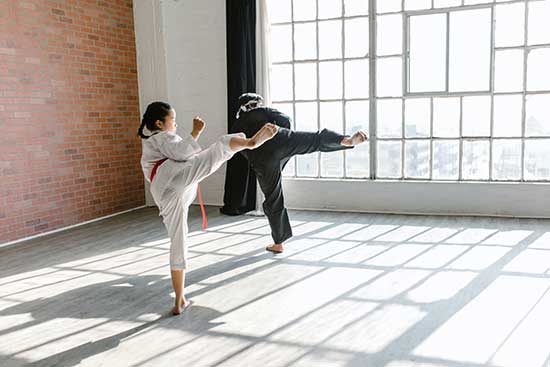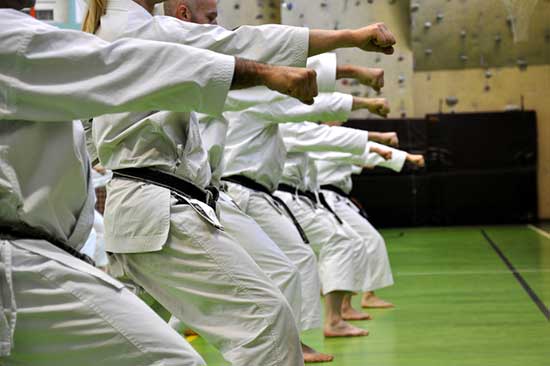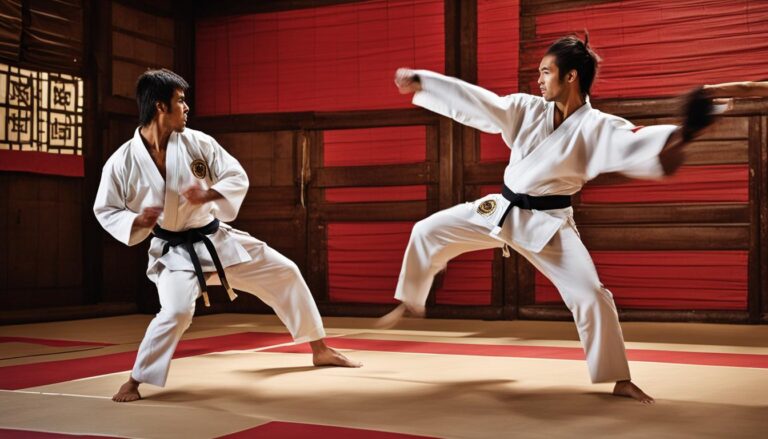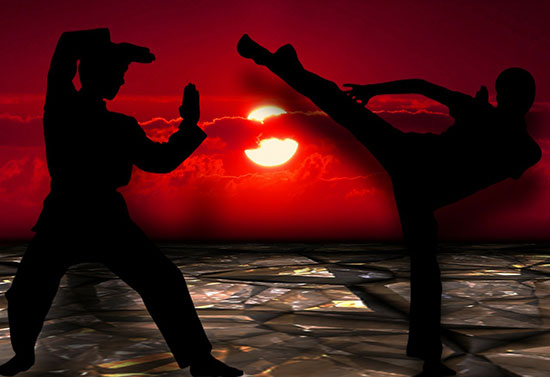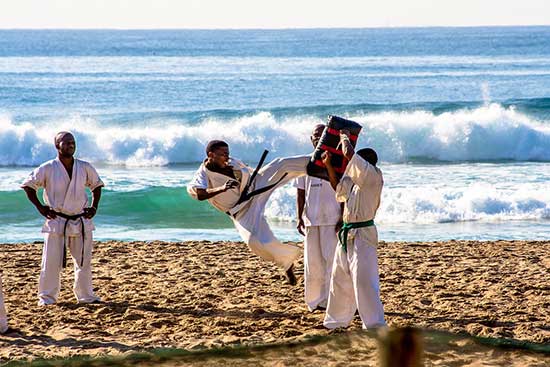In the conventional karate system, the yellow belt comes after the white belt as the second rank. It shows the student that he has reached a foundational level of karate competence and the start of the journey to mastery.
In short, the yellow belt is important because it signifies the student’s transition from a beginner to a more serious and dedicated practitioner.
The introduction of more complex moves like kicks, strikes, and blocks is another feature of the yellow belt in addition to its symbolic meaning.
The requirement to perform these techniques in a controlled way for the first time helps the student in honing his or her abilities and comprehension of the art.
Contents
How long does it take to get the yellow belt?
Usually, earning a karate yellow belt often requires several months to a year of practice. This could entail participating in regular classes, but also putting the necessary skills to the test outside of class, in sparring sessions.
The amount of time needed to obtain a yellow belt can also vary based on a number of elements, including the student’s commitment, the frequency of training, and the dojo’s requirements or the type of karate being practiced.
It is important to note that the time needed to obtain a yellow belt shouldn’t be your main concern.
Instead, trainees should concentrate on dedication in their training, their commitment to learning and growing, and their comprehension of the principles and ideals of karate.
Yellow Belt Requirements
Depending on the school and the style of karate being performed, learners may encounter distinct requirements when they want to get the yellow belt.
Nonetheless, most dojos demand that students have completed several months of instruction and demonstrate mastery of particular techniques.
Basic punches, kicks, and blocks, as well as more complex moves like combos and kata, are typically taught to and demonstrated by pupils.
They must also show that they are aware of karate etiquette, which includes correct bowing and consideration for their training partners.
Students may also be required to participate in sparring sessions at some dojos so they can practice their techniques against real opponents.
In a situation that is more realistic, this aids pupils in developing their reflexes, timing, and strategy.
Skills Learned at Yellow Belt Level
In addition to the fundamentals they learned as white belts, pupils are introduced to a variety of additional techniques at the yellow belt level. They consist:
Kicks
Pupils study the front kick (mae geri), side kick (yoko geri), roundhouse kick (mawashi geri), and back kick (ushiro geri). They must also show while using these tactics that they are aware of good foot placement, balance, and alignment.
Strikes
Students are taught how to use strikes like the punch (tsuki), hammer fist (tettsui uchi), and ridge hand strike (haito uchi). In performing these techniques, they must also show that they have a grasp of the appropriate posture, hand placement, and body mechanics.
Blocks
Pupils learn how to use blocks like the rising block (uchi uke), the outward block (soto uke), and the inner block (uchi uke) (age uke). In performing these techniques, they must also show that they have a grasp of the appropriate arm placement, posture, and timing.
Combinations
Students will learn a variety of techniques in succession, such as a punch followed by a kick or a block before an attack.
By executing these combinations, they must show that they have a grasp of precise time, sequencing, and balance.
Kata
Students are exposed to fundamental kata, which are pre-planned patterns of motion intended to mimic combat with fictitious foes. The kata aids in developing pupils’ knowledge of appropriate form, breathing, and timing.
Final words
For any karate student, earning a yellow belt is a big accomplishment. It stands for the initial stage in mastering the art and denotes the formation of a strong foundation of skills, manners, and discipline.
At this level, pupils are exposed to more complex techniques including kicks, strikes, and blocks, and they must show mastery of these moves.
Ultimately, obtaining a karate yellow belt calls for commitment, effort, and regular practice and prepares the student for further development of martial art.
A dedication to the ethics and philosophy of martial art is necessary for addition to meeting the technical criteria for karate’s yellow belt.
This entails putting an emphasis on discipline, respecting oneself and others, and being committed to one’s own development.
Students will keep picking up new moves as they advance in their karate training, and they will hone their skills.
Nonetheless, the groundwork laid at the yellow belt level will act as a strong foundation upon which students can expand their understanding and mastery of the craft.
The yellow belt is a notable achievement, but it’s vital to remember that karate practice doesn’t cease with it.
The belt system serves as a tool for tracking progress and achievement along the route, with the ultimate goal being to continue to learn, develop, and evolve both technically and philosophically.
Students will continue to build on the groundwork laid at the yellow belt level as they advance in their karate training and develop both technically and conceptually.
